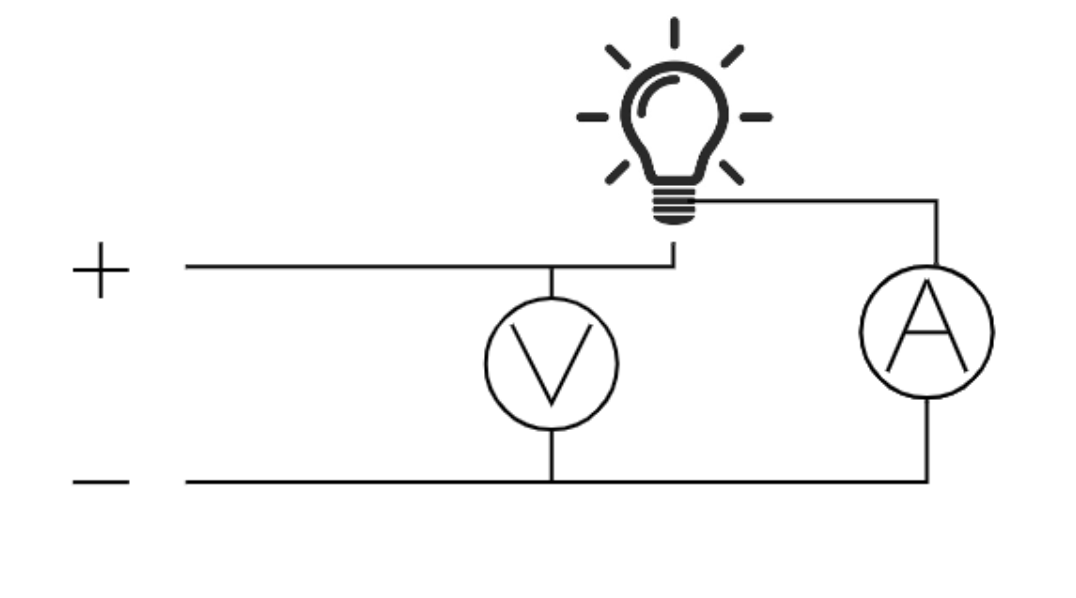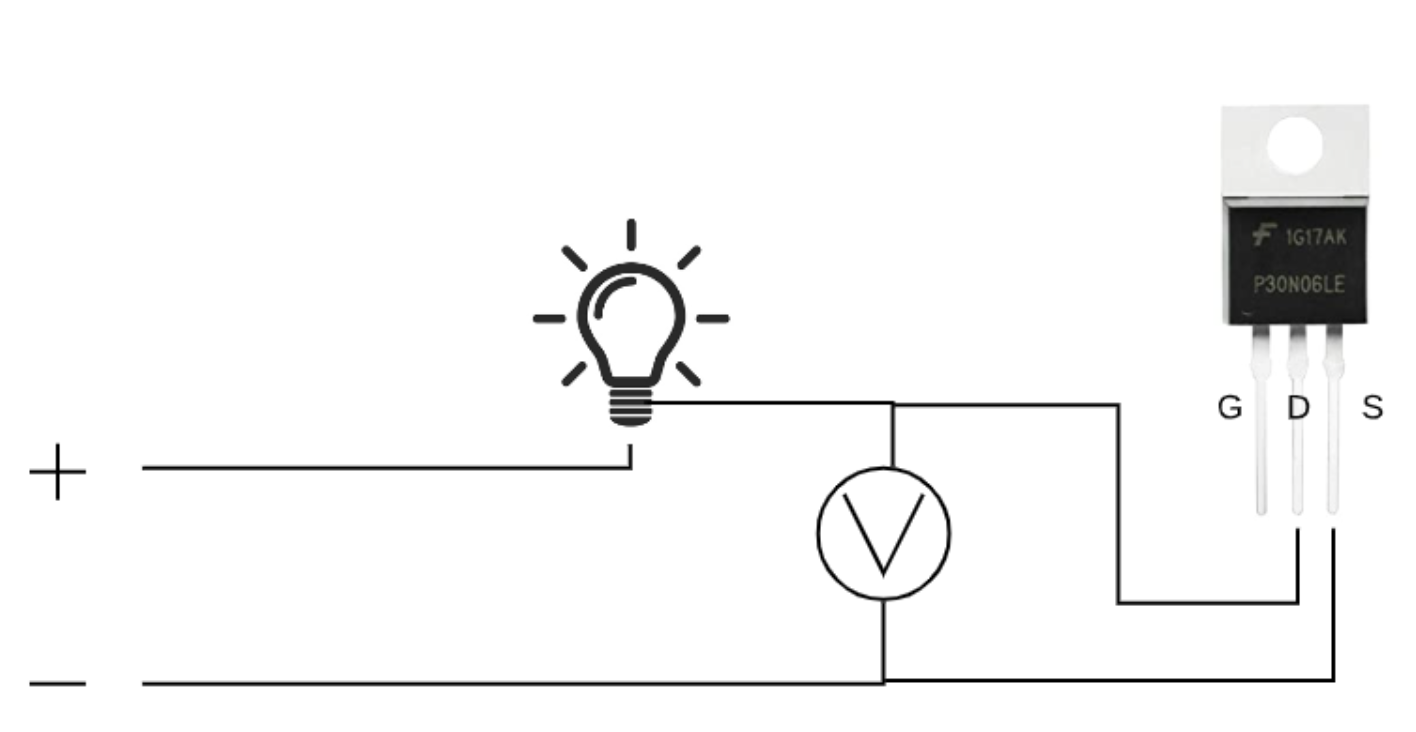...
The spec sheet will refer to a PD which is higher than our calculation. This is because it assumes that you can keep the MOSFET at 25C while operating which would mean you would need a heatsink.
Testing For Fake Mosfets
https://www.youtube.com/watch?v=XXcEgddzjnI
Testing Procedure
Using a 12V source and a automotive 12v light bulb:
- connect up the bulb and record its current draw from the bulb and the voltage of the supply.
To measure the Voltage from Drain to Source
- connect negative to Source(S)
- connect voltmeter as shown
- connect the + side of the voltmeter to Drain (Bulb should be off)
- connect the + side of the voltmeter to Gate (will activate the mosfet)
- connect the + side of the voltmeter to Drain (Bulb should be ON)
- record voltage
Testing IRFP260
Measurements
Voltage: 12.09v
Current: 2.00A
Voltage Drain to Source: 0.42v
Calculated R(ds)
R(ds) = Vds / I = 0.42v / 2.00A = 0.210 ohms
Datasheet Specs
https://www.vishay.com/docs/91215/91215.pdf
R(ds) = 0.055 ohms
Result
FAKE!
Reference
| Reference | URL |
|---|---|
| MOSFET Transistor | https://www.electronics-tutorials.ws/transistor/tran_6.html |
| MOSFETs Video | https://www.youtube.com/watch?v=GrvvkYTW_0k |
| Real vs Fake MOSFET | How to identify a Fake Transistor? | MOSFET Test | https://www.youtube.com/watch?v=XXcEgddzjnI |
...

